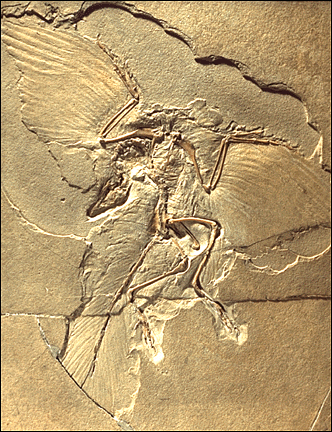Tikémi
lambeosaure


Nombre de messages : 193
Age : 40
Localisation : Bruxelles
Emploi : doctorante
Loisirs : lecture, puzzles
Date d'inscription : 07/06/2006
 |  Sujet: Un nouveau grand singe, p-ê ancêtre des gorilles Sujet: Un nouveau grand singe, p-ê ancêtre des gorilles  Jeu 23 Aoû - 15:45 Jeu 23 Aoû - 15:45 | |
| Une nouvelle découverte d’importance a été faite en Ethiopie, dans la région de l’Afar. Neuf dents (une canine et 8 molaires) ont été découvertes dans la Formation Chorora datée à 10 Ma. Ces dents appartenaient à au moins 3 individus différents (peut-être 6 ou plus) et montrent de nombreux points communs avec celles des gorilles actuels, ainsi que des divergences. Cette découverte repousse l’ancêtre commun des humains et des gorilles 2 Ma plus tard que ce que l’on pensait. Les dents appartiennent à un nouveau genre et une nouvelle espèce de grand singe, nommé Chororapithecus abyssinicus. Cet animal, peut-être proche de la lignée des gorilles, vivait dans le même environnement que Stegotetrabelodon (un proboscidien primitif (groupe des éléphants)), un grand giraffidé, un hippopotamidé primitif et des hipparioninae (ancêtres des chevaux). Les hipparioninae indiquent un habitat ouvert, peut-être inclus dans un environnement plus mosaïque. Néanmoins, n’étant connu que par quelques dents, il est difficile de lui attribuer exactement un groupe. Les points communs avec les gorilles actuels pourraient résulter d’une convergence liée à une alimentation identique. Espérons que des ossements seront bientôt découverts et permettront de savoir si Chororapithecus appartient bien à la lignée des gorilles ou non. Références et abstract : Suwa, Kono, Katoh, Asfaw & Beyene, 2007. A new species of great ape from the late Miocene epoch in Ethiopia. Nature 448: 921-924With the discovery of Ardipithecus, Orrorin and Sahelanthropus, our knowledge of hominid evolution before the emergence of Pliocene species of Australopithecus has significantly increased, extending the hominid fossil record back to at least 6 million years (Myr) ago. However, because of the dearth of fossil hominoid remains in sub-Saharan Africa spanning the period 12–7 Myr ago, nothing is known of the actual timing and mode of divergence of the African ape and hominid lineages. Most genomic-based studies suggest a late divergence date—5–6 Myr ago and 6–8 Myr ago for the human–chimp and human–gorilla splits, respectively10–14—and some palaeontological and molecular analyses hypothesize a Eurasian origin of the African ape and hominid clade. We report here the discovery and recognition of a new species of great ape, Chororapithecus abyssinicus, from the 10–10.5-Myr-old deposits of the Chorora Formation at the southern margin of the Afar rift. To the best of our knowledge, these are the first fossils of a large bodied Miocene ape from the African continent north of Kenya. They exhibit a gorilla-sized dentition that combines distinct shearing crests with thick enamel on its ‘functional’ side cusps. Visualization of the enamel–dentine junction by micro-computed tomography reveals shearing crest features that partly resemble the modern gorilla condition. These features represent genetically based structural modifications probably associated with an initial adaptation to a comparatively fibrous diet. The relatively flat cuspal enamel–dentine junction and thick enamel, however, suggest a concurrent adaptation to hard and/or abrasive food items. The combined evidence suggests that Chororapithecus may be a basal member of the gorilla clade, and that the latter exhibited some amount of adaptive and phyletic diversity at around 10–11 Myr ago. Le pdf de l'article et ses infos supplémentaires sont disponibles chez moi.  | |
|
Tikémi
lambeosaure


Nombre de messages : 193
Age : 40
Localisation : Bruxelles
Emploi : doctorante
Loisirs : lecture, puzzles
Date d'inscription : 07/06/2006
 |  Sujet: Re: Un nouveau grand singe, p-ê ancêtre des gorilles Sujet: Re: Un nouveau grand singe, p-ê ancêtre des gorilles  Mar 13 Nov - 13:17 Mar 13 Nov - 13:17 | |
|  Une nouvelle de Lolo (trop fainéant mon canard ?) : Un cousin de Chororapithecus a été découvert dans un pays voisin, le Kenya : Nakalipithecus nakayamai. Connu par un fragment de mâchoire et quelques dents, il ressemble à l'Ouranopithecus macedoniensis (trouvé en Grèce). Plus d'infos : http://www.livescience.com/health/071112-new-ape.html | |
|
